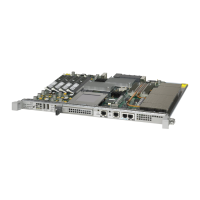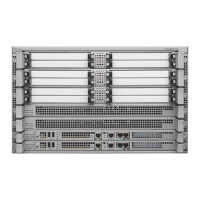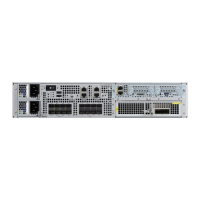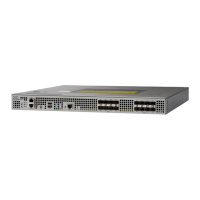2
Each content engine announces its presence and a list of all routers with which it has established
communications. The routers reply with their view (list) of content engines in the group.
3
When the view is consistent across all content engines in the cluster, one content engine is designated as
the lead and sets the policy that the routers need to deploy in redirecting packets.
WCCPv2 Support for Services Other Than HTTP
WCCPv2 allows redirection of traffic other than HTTP (TCP port 80 traffic), including a variety of UDP and
TCP traffic. WCCPv1 supported the redirection of HTTP (TCP port 80) traffic only. WCCPv2 supports the
redirection of packets intended for other ports, including those used for proxy-web cache handling, File
Transfer Protocol (FTP) caching, FTP proxy handling, web caching for ports other than 80, and Real Audio,
video, and telephony applications.
To accommodate the various types of services available, WCCPv2 introduced the concept of multiple service
groups. Service information is specified in the WCCP configuration commands using dynamic services
identification numbers (such as 98) or a predefined service keyword (such as web-cache). This information
is used to validate that service group members are all using or providing the same service.
The content engines in a service group specify traffic to be redirected by protocol (TCP or UDP) and up to
eight source or destination ports. Each service group has a priority status assigned to it. The priority of a
dynamic service is assigned by the content engine. The priority value is in the range of 0 to 255 where 0 is
the lowest priority. The predefined web-cache service has an assigned priority of 240.
WCCPv2 Support for Multiple Routers
WCCPv2 allows multiple routers to be attached to a cluster of cache engines. The use of multiple routers in
a service group allows for redundancy, interface aggregation, and distribution of the redirection load. WCCPv2
supports up to 32 routers per service group. Each service group is established and maintained independently.
WCCPv2 MD5 Security
WCCPv2 provides optional authentication that enables you to control which routers and content engines
become part of the service group using passwords and the Hashed Message Authentication Code—Message
Digest (HMAC MD5) standard. Shared-secret MD5 one-time authentication (set using the ip wccp [password
[0 | 7] password] global configuration command) enables messages to be protected against interception,
inspection, and replay.
WCCPv2 Web Cache Packet Return
If a content engine is unable to provide a requested object it has cached due to error or overload, the content
engine will return the request to the router for onward transmission to the originally specified destination
server. WCCPv2 provides a check on packets that determines which requests have been returned from the
content engine unserviced. Using this information, the router can then forward the request to the originally
targeted server (rather than attempting to resend the request to the content engine cluster). This process provides
error handling transparency to clients.
Typical reasons why a content engine would reject packets and initiate the packet return feature include the
following:
IP Application Services Configuration Guide, Cisco IOS XE Release 3S (Cisco ASR 1000)
57
Configuring WCCP
WCCPv2 Support for Services Other Than HTTP

